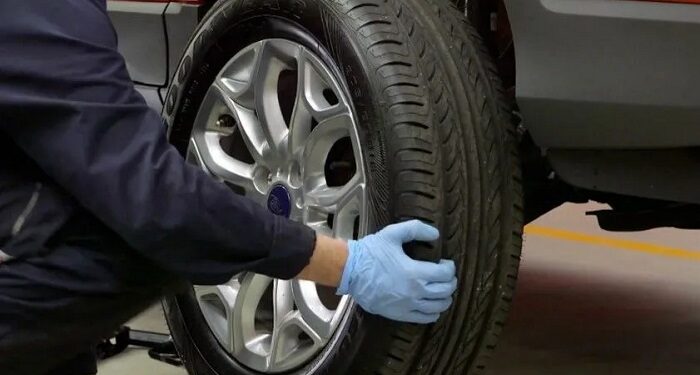Tyres are the only point of contact between your car and the road, making them one of the most important safety features of your vehicle. Worn-out or damaged tyres can compromise handling, braking, and overall driving safety. Knowing when to replace your tyres is essential to avoid accidents and maintain smooth performance.
Visible Wear and Tear: Spotting Surface Damage
The most obvious signs that it’s time for new tyres can often be seen directly on the surface. Regular inspections help you catch problems before they become dangerous.
Low Tread Depth: Losing Grip on the Road
Tyre treads provide grip on the road, especially in wet conditions. If the tread depth is below 1.6mm—the legal minimum in many countries—it’s time to replace your tyres immediately. Reduced tread means reduced traction, longer stopping distances, and a higher risk of aquaplaning.
Cracks and Bulges: Warning Signs of Weakness
Cracks in the sidewalls or bulges on the tyre surface indicate structural weakness. These can develop due to ageing, overloading, under-inflation, or pothole damage. Left unchecked, they can lead to sudden blowouts, putting you and others at serious risk.
Decline in Driving Performance: When Tyres Affect Control
Worn tyres don’t just look bad—they directly affect how your vehicle handles, brakes, and rides.
Longer Braking Distances: A Hidden Danger
If you notice that your car takes longer to stop, it may be due to reduced tread or uneven tyre wear. This is especially dangerous in emergencies when every metre counts.
Poor Handling and Vibration: Losing Road Confidence
Shaking, vibration, or a noticeable decline in steering control are all warning signs that your tyres are no longer performing properly. While these symptoms can sometimes indicate alignment or suspension problems, worn tyres are often the underlying cause.
Age of the Tyres: Safety Beyond Appearance
Even if your tyres appear fine on the outside, their age can make them unsafe due to natural rubber deterioration.
The 5–6 Year Rule: Expert Recommendations
Most experts recommend replacing tyres every 5 to 6 years, regardless of tread depth. Over time, rubber hardens and loses flexibility, making tyres more prone to cracking and failure.
Check the Manufacturing Date: Reading the Code
Tyres have a manufacturing code stamped on the sidewall, usually in the form of a four-digit number. For example, “2318” means the tyre was made in the 23rd week of 2018. If your tyres are more than 10 years old, they should be replaced immediately, even if they look fine.
Uneven or Irregular Wear: Signs of Underlying Issues
Uneven tyre wear often signals problems beyond the tyres themselves, such as poor alignment or suspension issues.
Bald Spots and Cupping: Irregular Wear Patterns
Flat or bald spots typically occur when tyres are not properly aligned, balanced, or rotated. Cupping or scalloping—a wavy wear pattern—may also indicate suspension problems that need attention.
One-Sided Wear: The Alignment Warning
If one side of the tyre is more worn than the other, it often points to wheel misalignment. This not only reduces safety but also impacts fuel efficiency and accelerates overall tyre wear.
Stay Safe, Replace on Time
Your tyres play a crucial role in your car’s safety and performance. By watching out for signs such as low tread depth, cracks, bulges, uneven wear, or simply old age, you can prevent breakdowns and accidents.
Replacing your tyres on time is not just about extending the life of your car—it’s about protecting yourself, your passengers, and everyone else on the road. Investing in healthy tyres is investing in peace of mind.









